Create multi tasks
Use Create multi tasks to create multiple video annotation tasks with the same configuration.
Note
The Create multi tasks feature is available for videos only.Check out:
Create multi tasks
To create the multi tasks:
- On the Tasks page select +.
- Select Create multi tasks.

Next, specify the parameters in the task configurator:
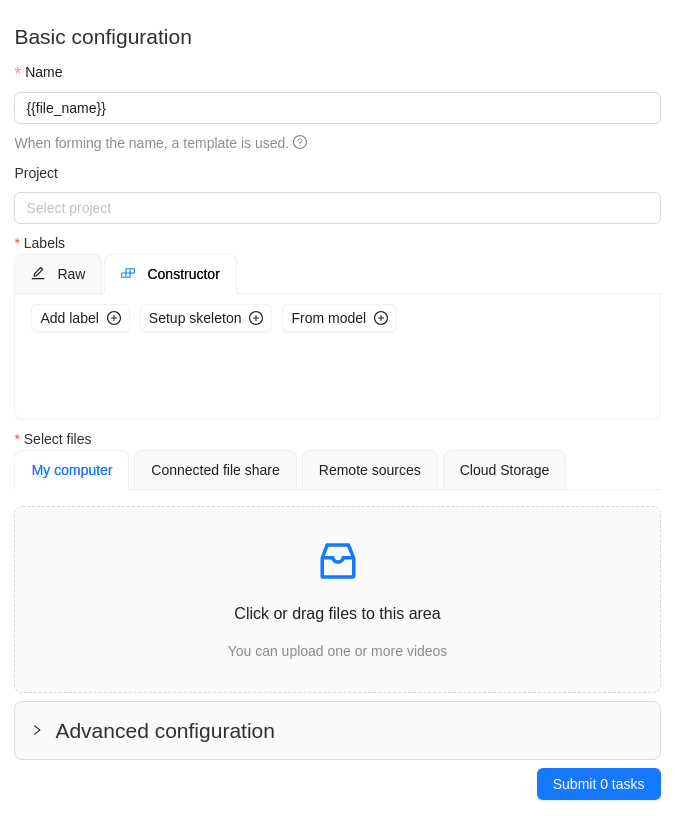
-
In the Name field, enter the name of the new task:
- Enter the name of the task
- (Optional)
{{index}}adds an index to the file in the set (starting from 0). - (Optional)
{{file_name}}adds the file’s name to the task’s name.
-
(Optional) From the Projects drop-down, select a project for the tasks.
Leave this field empty if you do not want to assign tasks to any project.
Note
Following steps are valid if the tasks do not belong to a project.
If the tasks have been assigned to a project, the project’s labels will be applied to the tasks. -
On the Constructor tab, select Add label.
-
In the Label name field, enter the name of the label.
-
(Optional) Select the color for the label.
-
(Optional) Select Add an attribute and set up its properties.
-
Select Select files to upload files for annotation.
Note
You cannot upload multiple tasks from the cloud storage. -
Select Submit
Ntasks
Example
A step-by-step example for creating the multiple tasks:
-
In the Name field, enter the
Create_multitask-{{index}}-{{file_name}}. -
Add labels.
-
Select files.
In case there are more than four files, only the total number of selected files will be displayed: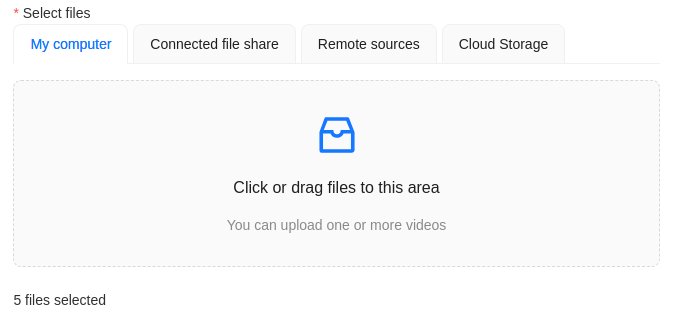
-
Select Submit
Ntasks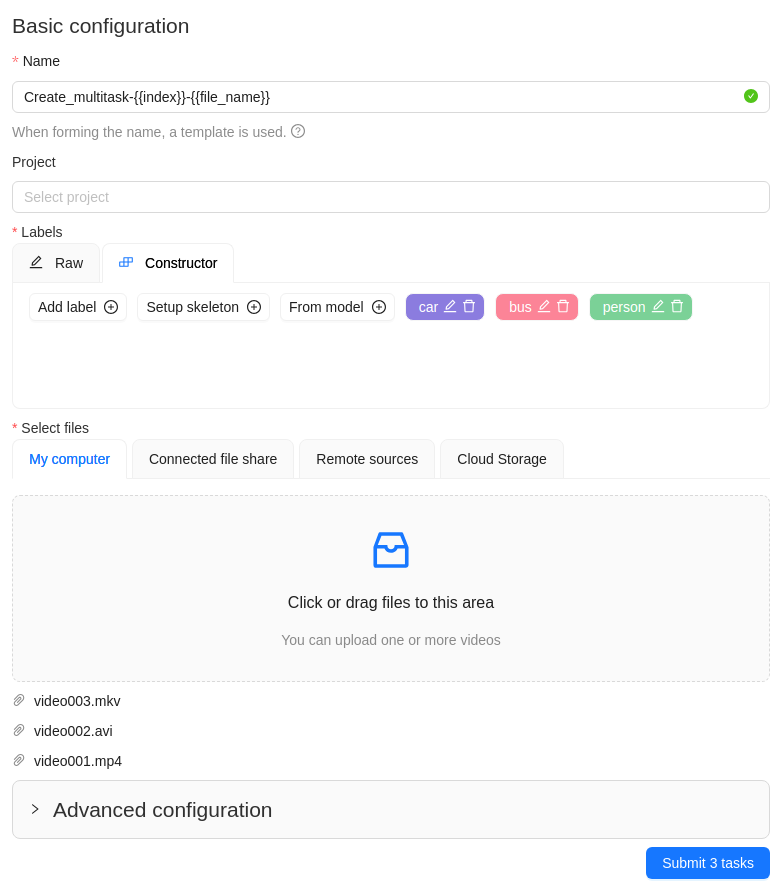
-
You will see a progress bar that shows the progress of the tasks being created:

-
Select Ok.

The result will look like the following:
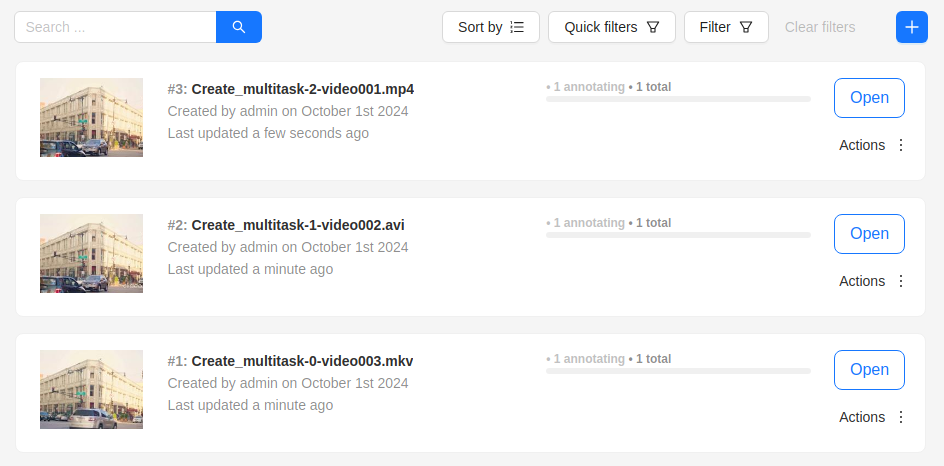
Errors
During the process of adding multiple tasks, the following errors may occur:
| Error | Description |
|---|---|
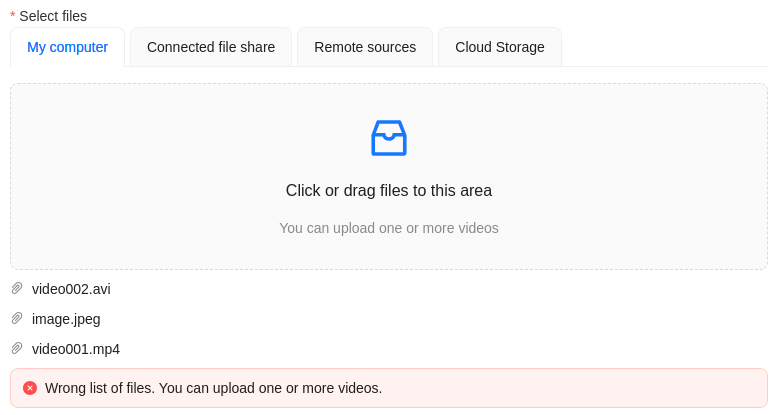 |
Wrong file format. You can add only video files. |
 |
In the process of creating a task, CVAT was not able to process the video file. The name of the failed file will be displayed on the progress bar. To fix this issue: |
Advanced configuration
Use advanced configuration to set additional parameters for the task and customize it to meet specific needs or requirements.
For more information, consult Advanced configuration